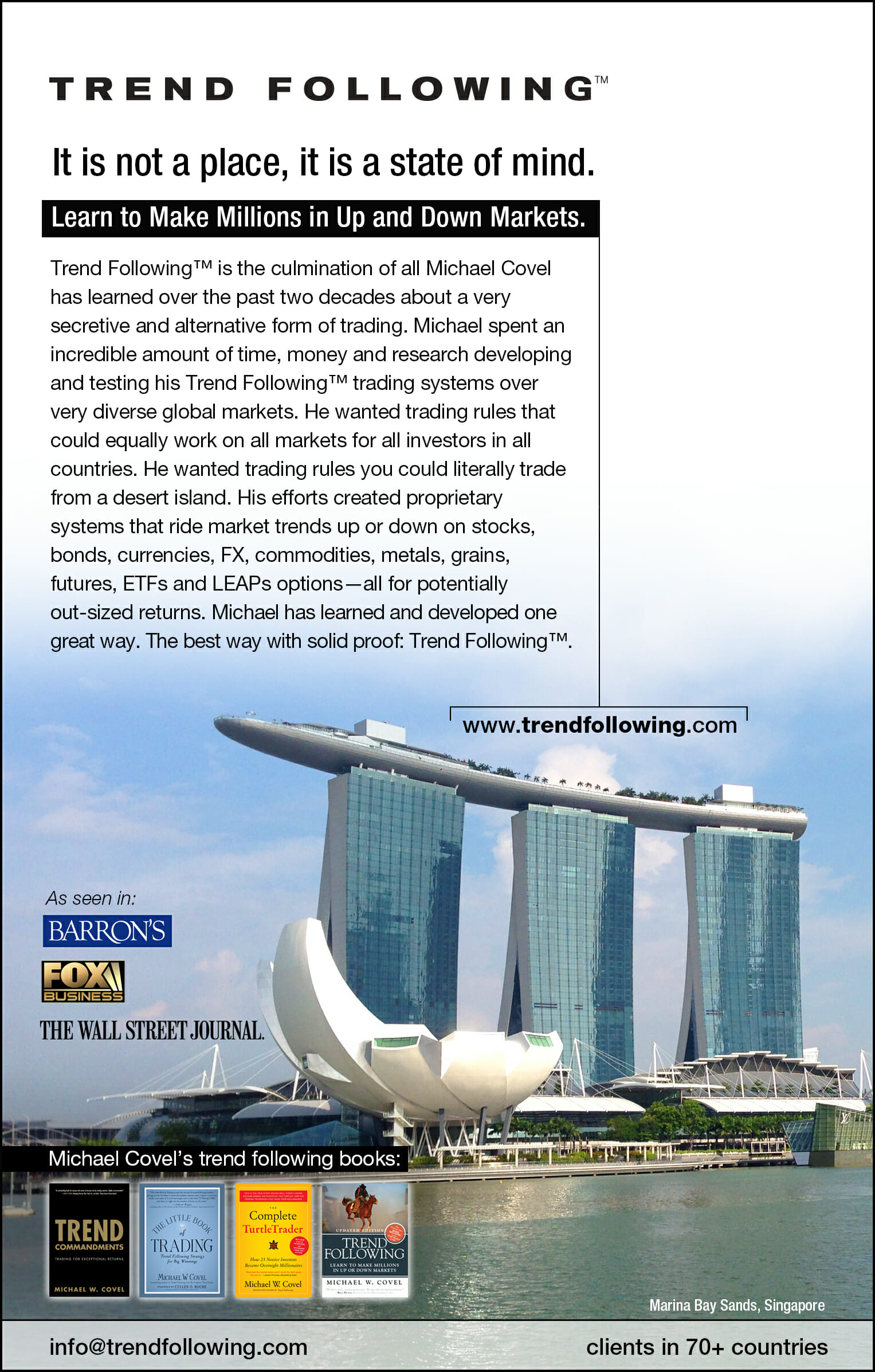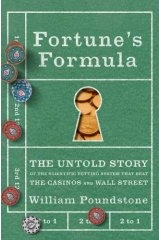Read the new book Fortune’s Formula: The Untold Story of the Scientific Betting System That Beat the Casinos and Wall Street by William Poundstone.
“The fundamental law of investing is the uncertainty of the future.”
Peter Bernstein
What do money management and data transmission over phone lines have in common? Uncertainty.
Problems associated with data transmission are very similar to issues a gambler or trader faces in determining the optimal amount of money to trade at any given time. Believe it or not, the concept of how much money you must trade is related to work of Bell engineers going back decades. In 1956 J. L. Kelly published a paper while working at Bell Labs. The paper sought to solve issues associated with noise over phone lines, noise that was random and very unpredictable:
Kelly, J. L., Jr., A New Interpretation of Information Rate, Bell System Technical Journal, pp.917-926, July, 1956:
If a gambler places bets on the input symbol to a communication channel and bets his money in the same proportion each time a particular symbol is received, his capital will grow (or shrink) exponentially. If the odds are consistent with the probabilities of occurrence of the transmitted symbols (i.e., equal to their reciprocals), the maximum value of this exponential rate of growth will be equal to the rate of transmission of information. If the odds are not fair, i.e., not consistent with the transmitted symbol probabilities but consistent with some other set of probabilities, the maximum exponential rate of growth will be larger than it would have been with no channel by an amount equal to the rate of transmission of information.
The formula has come to be simply known as the Kelly formula and it was great inspiration to great trend traders and systems traders. They were inspired directly by Bell Labs research to develop systems centered around determining the optimal bet size (otherwise known as money management).
Kelly Formula
A web post from a reader describes the Kelly Formula as:
What is the Kelly criterion (or formula)? It is a formula for calculating how much to bet. It assumes that your objective is long term capital growth (getting rich). The handicapper’s choice of money management strategy is similar to the stock market choice between growth stocks and income stocks. Growth stocks tend to be more volatile, but in the long term return more profit. That is because the profits from growth stocks are reinvested rather than skimmed off. Every reinvestment is a calculated risk. Therefore, income stocks tend to fluctuate in value less, but also return less profit in the long term. Kelly betting is for growth. It reinvests profits, and thus puts them at risk. If your objective is to make small but consistent profits,it may be too aggressive a money management scheme.
The Kelly’s formula is : Kelly % = W – (1-W)/R where:
- Kelly % = percentage of capital to be put into a single trade.
- W = Historical winning percentage of a trading system.
- R = Historical Average Win/Loss ratio.
Edward O. Thorp: Beat the Dealer
Thorp is famous for his blackjack paperback, Beat the Dealer, where he explores Kelly for gambling:
The central problem for gamblers is to find positive expectation bets. But the gambler also needs to know how to manage his money, i.e. how much to bet. In the stock market (more inclusively, the securities markets) the problem is similar but more complex. The gambler, who is now an investor, looks for excess risk adjusted return. In both these settings, we explore the use of the Kelly criterion, which is to maximize the expected value of the logarithm of wealth (maximize expected logarithmic utility)…
The criterion is known to economists and financial theorists by names such as the geometric mean maximizing portfolio strategy, maximizing logarithmic utility, the growth-optimal strategy, the capital growth criterion, etc.
Trend Following Products
Learn more about the Classic Bestselling TurtleTrader Book.
Review trend following systems and training:

More info here.


